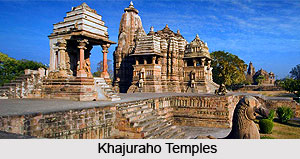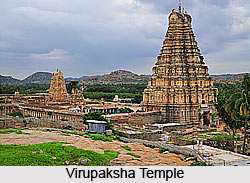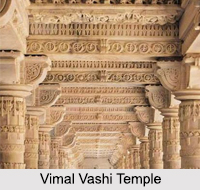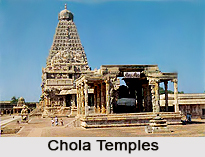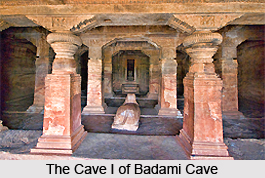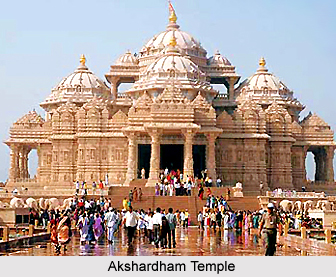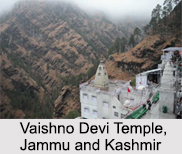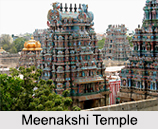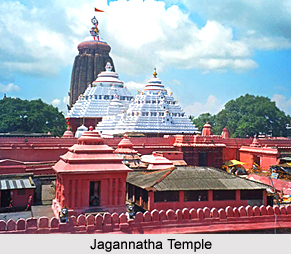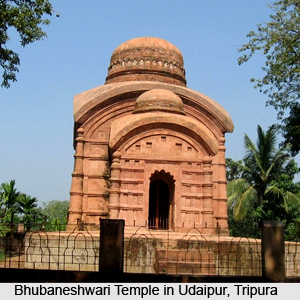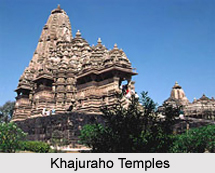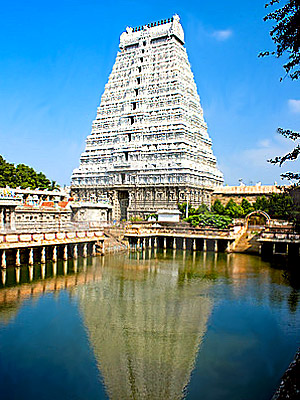 The architecture of Arunachaleswarar temple reveals that the temple plan includes five Prakarams. In each Prakaram there are statues of Nandi placed facing the Lord Arunachaleswarar. The fifth Prakaram is the outer most Prakaram and it has four Gopurams on different sides of the temple. The four gopurams are Thirumanjana gopuram, Ammaniammal gopuram, Pei gopuram and the Rajagopuram.
The architecture of Arunachaleswarar temple reveals that the temple plan includes five Prakarams. In each Prakaram there are statues of Nandi placed facing the Lord Arunachaleswarar. The fifth Prakaram is the outer most Prakaram and it has four Gopurams on different sides of the temple. The four gopurams are Thirumanjana gopuram, Ammaniammal gopuram, Pei gopuram and the Rajagopuram.
Rajagopuram is an imposing 217 feet tall with an 11 tier gopuram. It is considered as the second tallest temple gopuram in South India. King Krishnadevarayar of the Vijayanagaram kingdom is responsible for this temple architecture. In the fifth Prakaram there is a thousand pillared mandapam besides a holy tank called Shiv Ganga tank. This thousand pillared hall is designed aesthetically with all the stone pillars finely sculpted. This mandapam is used on Thirumanjanam that coincides with the appearance of Thiruvathirai star. There is an under ground chamber known as the Pathala lingam chamber that contains the Shiva lingam. Ammani Ammal, a Sanyasini built the north gopuram and Ammaniammal gopuram.
Kambattu Elayanar Sannathi is the next important landmark in this Prakaram. This Sannathi was built by King Krishnadevarayar. There are four chambers to this Sannathi. The third chamber is used for prayers; the fourth one is the moolasthanam where the deity is Lord Muruga. The first chamber contains many sculptures that are acquisitively created. From here one can go to the second chamber. In front of the thousand pillared mandapam stands the sannathi of Siva Ganga Vinayagar. It has an imposing vimanam with several deities.
Arunagirinathar Mandapam or Gopurathilayanar sannathi is another major structure. Lord Arunagirinathar is in a standing posture offering his prayers to Lord Karthikeya. Next is the Kalyana sudarsana sannathi that faces the Vallala Maharaja Gopuram from the south side. There are idols of Lingam, Nandhi, and Goddess Devi in this sannathi. The Vallala Maharaja Gopuram was constructed by King Ballala. In this Gopuram the Lord Arunachaleswarar takes the role of King Ballala`s son to perform the funeral rites of the king as the king had no heir.
Brahma Theertham is located in the fourth prakaram. King Ballala`s statue is placed on the east side of the Vallala Gopuram. In the third Prakaram there are shrines for Lingam that dates back to twelfth century period. There is also the Kili Gopuram entrance. The flag staff is located on the eastern side and the huge Unnamalai Amman shrine is on the north side. The second prakaram has several forms of Shiva Lingam and it is the inner most and lies closest to the temple.
Behind the sanctum, there is a shrine of Venugopalaswamy which is an incarnation of Lord Vishnu. Around the sanctum there are images of Somaskandar, Lingodbhavar, Durga, Chandekeswarar, Gajalakshmi, Arumugaswami, Dakshinamoorthy, Swarnabairavar, Nataraja and Palliyarai. The Kalyana Mandapam is in the south-west of the precinct and built in Vijayanagara style.
In the outer shrine of the temple there is a stone that has protective railings like a sacred tree. The pillars in the hall carved with images of yali that is used as the symbol of Nayak power. There is a small shrine for Subramaya and a large tank to the south of the court. The Sivagangai Vinayagar shrine is present in the northern bank of the Sivanganga tank.
